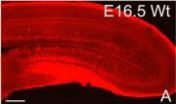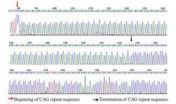(Press-News.org) AUGUSTA, Ga. - A virtual patient, the electronic medical record, and questions about how well patients sleep appear effective new tools in recognizing suicide risk, researchers say.
A fourth – and perhaps more powerful – tool against suicide is the comfort level of caregivers and family members in talking openly about it, said Dr. W. Vaughn McCall, Chairman of the Department of Psychiatry and Health Behavior at the Medical College of Georgia at Georgia Regents University.
Suicide is among the top 10 causes of death in the United States for every group age 10 and older, according to the Centers for Disease Control and Prevention.
"We need to get this on the table and keep this on the table," McCall said. McCall, Department Vice Chairman Dr. Peter B. Rosenquist, and MCG psychiatrist, Dr. Adrianna Foster, led the workshop, "New Developments in the Identification of Suicide Risk," at the American Psychiatric Association Annual Meeting May 3-7 in New York.
"We have made progress increasing young people's comfort and maybe even older people's comfort at talking about issues such as sex, alcoholism, and drug abuse but we have not crossed that hurdle with suicide," McCall said. In fact, one of his many goals is for primary care givers to incorporate these conversations into their regular patient checkups.
"You should be able to talk about suicide without blame, shame, or accusation," McCall said.
Increased comfort can start in medical school where Foster is using a computer-simulated patient to help students broach the topic of suicide. Students progress to seeing standardized patients, essentially actors simulating a mood disorder or other mental-health problem.
Foster is still analyzing data, but preliminary information from the study, funded by the American Foundation for Suicide Prevention, suggests that this simple, digital teaching aid can enhance medical students' ability to recognize suicide risk.
Technology is also helping ensure that every patient seeking psychiatric care at Georgia Regents Health System receives a suicide assessment. Rosenquist worked with Dr. David Fallaw, an internist and Chief Medical Information Officer for Georgia Regents Medical Center, to automatically link the electronic medical record to an established suicide risk assessment.
"It's a forced choice," McCall said. "You cannot sign and complete the electronic medical record until you have also done the C-SSRS," he said. McCall is referencing the Columbia-Suicide Severity Rating Scale, developed by Columbia University Medical Center, that has proven successful at predicting suicide attempts in adolescents and adults. The C-SSRS also is activated whenever a red flag is raised in the provision of care, such as a trauma patient talking about escalated drinking and negative thinking.
The assessment starts with pointed questions about whether a patient has thought in the past week that he would rather die in his sleep than wake up and whether he has actively thought of killing himself. The answers are typically 'no,' and the survey is over. Otherwise, increasingly specific questions follow, including questions about methods.
"It's a hierarchy of planning that leads from no ideas to some ideas to a specific plan to collecting the implements to intention to carry it out," McCall said. C-SSRS also walks the caregiver through suggested levels of intervention as needed.
Insomnia is increasingly emerging as a clear risk factor for suicide although even mental health professionals are still absorbing the correlation. "The most secure message is that patients who have significant complaints about insomnia should be assumed to be at increased risk of suicide," said McCall, who studies the connection between depression, insomnia, and suicide. Researchers have established a connection at many levels, including, as McCall has shown, a general sense of hopelessness that can result from insomnia.
"This is a basic biological function and even this is beyond me," he said, reflecting the thoughts of patients who have been struggling weeks or more just to sleep. Additionally, a history of suicide attempts often correlates with low levels of serotonin, a neurotransmitter involved in sleep and depression. In fact, McCall is leading a National Institute of Mental Health-funded clinical trial to determine whether adding a sleeping pill to their therapeutic regimen reduces suicidal thoughts in depressed patients with insomnia.
Another possible link is early – but not surprising – evidence associating suicide attempts with problem-solving deficiencies, which links back to insomnia. "People who have not gotten enough sleep simply are unable to solve problems with the same degree of complexity as well as people who have gotten a good night's sleep," McCall said.
Insomnia rates are on the rise in this country with ever-present light and communication as key intruders on this very basic biological function, McCall said. Suicide rates also are on the rise as a major cause of death in the world, moving from 14th to 13th in global death rates from 1990 to 2010, according to the Global Burden of Diseases, Injuries and Risk Factors Study 2010 ranking causes of death in nearly 200 countries.
Meanwhile, other largely preventable deaths such as infections from unclean water and lack of vaccinations, have mostly taken a nose dive.
"'While we as a world population are successfully impacting infectious diseases and reducing their impact on world mortality, essentially nothing has been done about suicide so it correspondingly moves up," McCall said. "It will never get better if we can't even talk about it."
INFORMATION:
Toni Baker
Communications Director
Medical College of Georgia
Georgia Regents University
706-721-4421 Office
706-825-6473 Cell
tbaker@gru.edu
Virtual patients, medical records and sleep queries may help reduce suicide
2014-05-05
ELSE PRESS RELEASES FROM THIS DATE:
Light-sensitive 'eyes' in plants
2014-05-05
Most plants try to turn towards the sun. Scientists from the University of Gothenburg have worked with Finnish colleagues to understand how light-sensitive proteins in plant cells change when they discover light. The results have been published in the most recent issue of Nature.
The family of proteins involved is known as the "phytochrome" family, and these proteins are found in all plant leaves. These proteins detect the presence of light and inform the cell whether it is day or night, or whether the plant is in the shade or the sun.
"You can think of them as the ...
Study reveals potentially unnecessary radiation after suspected sports-related injury
2014-05-05
VANCOUVER, BRITISH COLUMBIA – A new study of Utah youth with suspected sports-related head injuries found that emergency room visits for children with sports-related head injuries have increased since the state's concussion law passed in 2011, along with a rise in head CT scans -- leading to potentially unnecessary radiation exposure.
The results were announced at the Pediatric Academic Societies conference in Vancouver, British Columbia in May by William McDonnell, M.D., J.D., associate professor of pediatrics at the University of Utah.
The study, completed by McDonnell ...
New research explores how smoking while pregnant leads to other diseases
2014-05-05
VANCOUVER, BRITISH COLUMBIA – While many parents-to-be are aware that the health of their baby starts before they've actually arrived into the world, recent research reveals that "harm" (i.e., tobacco smoke, dirty air, poor nutrition, even preeclampsia) may not present itself disease-wise until well into adulthood or when a second harmful "hit" triggers the individual's susceptibility.
The results were announced at the Pediatric Academic Societies conference in Vancouver, British Columbia in May by Lisa Joss-Moore, Ph.D., University of Utah Department of Pediatrics. ...
Uncorking East Antarctica yields unstoppable sea-level rise
2014-05-05
The melting of a rather small ice volume on East Antarctica's shore could trigger a persistent ice discharge into the ocean, resulting in unstoppable sea-level rise for thousands of years to come. This is shown in a study now published in Nature Climate Change by scientists from the Potsdam Institute for Climate Impact Research (PIK). The findings are based on computer simulations of the Antarctic ice flow using improved data of the ground profile underneath the ice sheet.
"East Antarctica's Wilkes Basin is like a bottle on a slant," says lead-author Matthias Mengel, ...
Dual method to remove precancerous colon polyps may substantially reduce health-care costs
2014-05-05
Chicago, IL (May 5, 2014) — A surgical method combining two techniques for removing precancerous polyps during colonoscopies can substantially reduce the recovery time and the length of hospital stays, potentially saving the health-care system millions of dollars, according to research presented today at Digestive Disease Week® (DDW).
"Not only did we find that patients were discharged a day and a half earlier, we discovered other benefits, which could transform our approach to removing difficult colon polyps," said Jonathan Buscaglia, MD, the study's lead researcher ...
Women and PAD: Excellent treatment outcomes in spite of disease severity
2014-05-05
ANN ARBOR, Mich. – Women face greater limits on their lifestyle and have more severe symptoms as a result of peripheral artery disease (PAD), but minimally invasive procedures used to unclog arteries are just as successful as in men.
The success of procedures, such as angioplasty or stent placement, in treating women with leg PAD was revealed in a Journal of the American College of Cardiology study.
The study provides a rare look at gender differences in PAD. PAD happens when fatty deposits build up in arteries outside the heart, usually the arteries supplying fresh ...
Cajal-Retzius cell loss and amyloidosis in Alzheimer's disease
2014-05-05
Cajal-Retzius cells are reelin-secreting neurons in the marginal zone of the neocortex and hippocampus. However, the relationship between Cajal-Retzius cells and Alzheimer's disease is unknown. Dr. Jinbo Deng and team from Henan University in China revealed that the number of Cajal-Retzius cells markedly reduced with age in both wild type and in mice over-expressing the Swedish double mutant form of amyloid precursor protein 695 (transgenic (Tg) 2576 mice). The decline in Cajal-Retzius cells in Tg2576 mice was found to occur concomitantly with the onset of Alzheimer's disease ...
New knowledge about muscular dystrophy
2014-05-05
The most common form of muscular dystrophy among adults is dystrophia myotonica type 1 (DM1), where approximately 1 in every 8000 is affected by the disease. The severity of the disease varies from mild forms to severe congenital forms. It is dominantly inherited and accumulates through generations, gaining increased severity and lowered age of onset. DM1 is characterised by accumulating toxic aggregates of ribonucleic acids (RNA) from a specific mutated gene (see figure 1).
When this RNA, which contains thousands of CUG nucleotide repeats, builds up in the cell, it attracts ...
Genetic diagnosis can rule out a suspected Huntington's chorea patient
2014-05-05
Huntington's disease is an autosomal-dominant inherited neurodegenerative disease with a distinct phenotype, but the pathogenesis is unclear. Although patients with a family history have more typical clinical symptoms, signs, and pathological changes, as well as an unambiguous clinical diagnosis, other diseases with dance-like movements, e.g., dentatorubral-pallidoluy-sian atrophy, spinocerebellar ataxia type 17, Huntington's disease-like-2, and neuroferritinopathy, are difficult to identify and distinguish from Huntington's disease. By mutation screening for CAG repeats ...
Animal hoarding, a lesser-known problem for public health and welfare
2014-05-05
Animal hoarding is a psychiatric disorder that consists of accumulating large numbers of animals at home, usually cats and dogs, without providing them with a minimal standard of care. Researchers from IMIM (Hospital del Mar Research Institute) publish the first European study to provide data on this disorder, in the Journal Animal Welfare. The disorder is still largely unknown and has a negative effect on the health of both the people who suffer from it and the animals involved.
"This is the first step towards public recognition of this disorder, a disorder that constitutes ...




